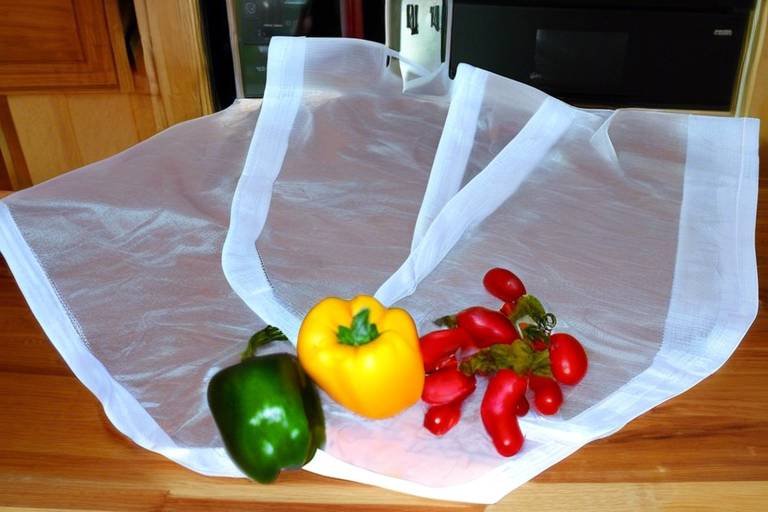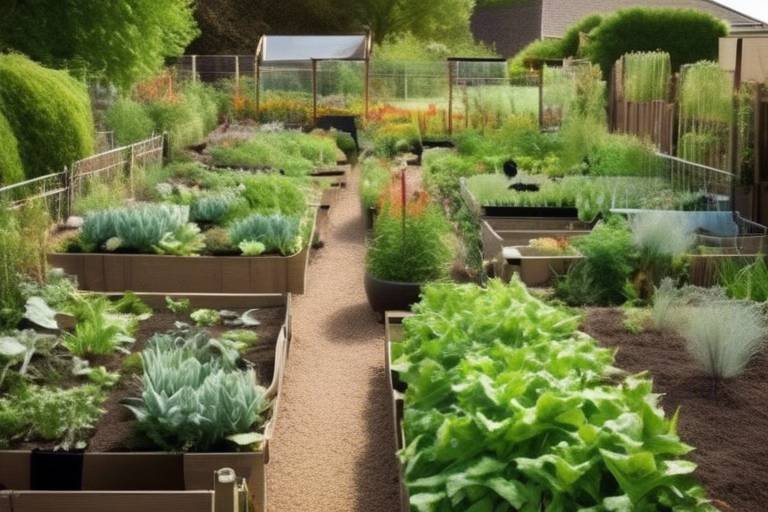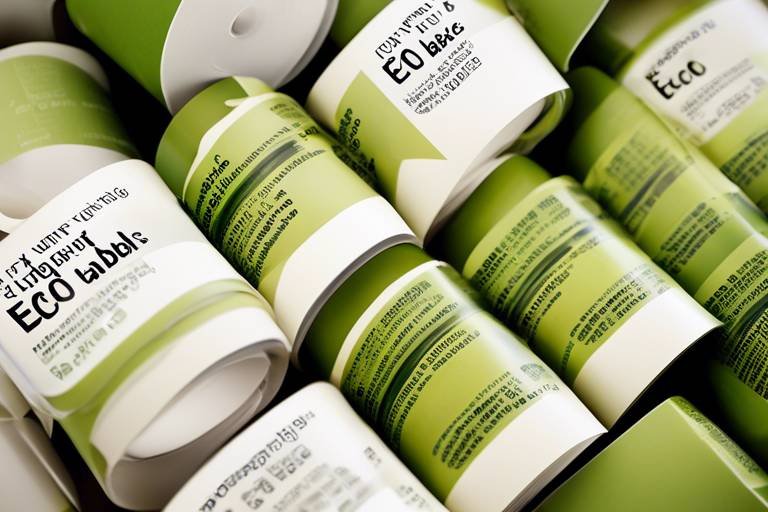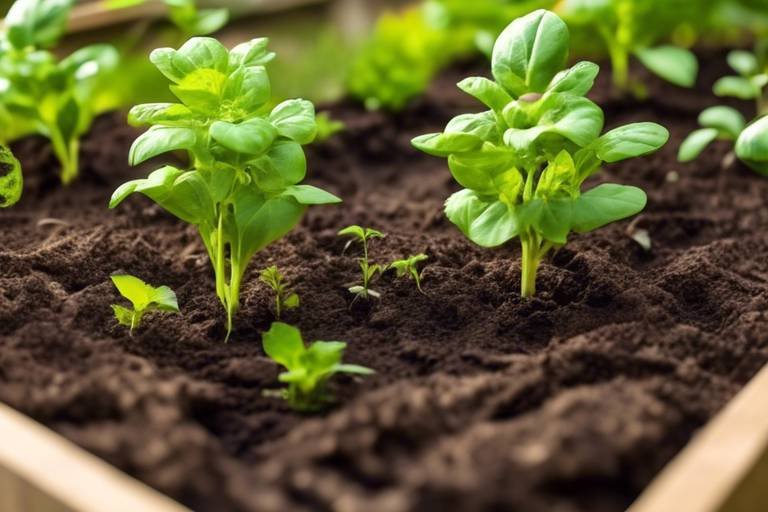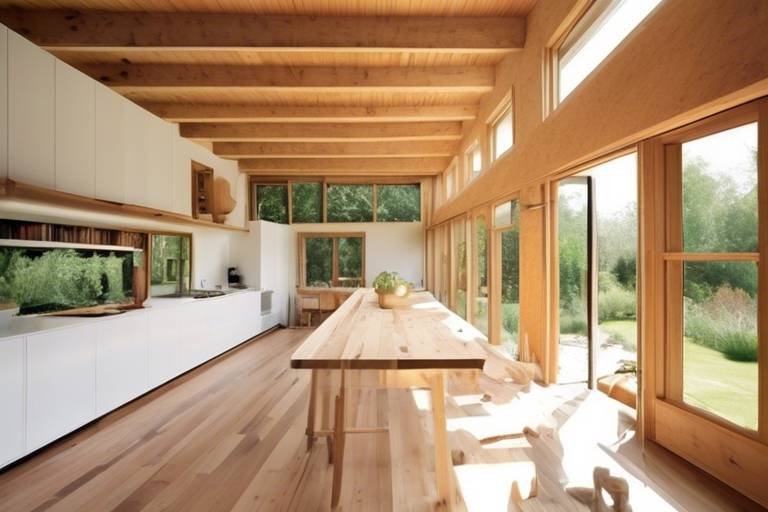How to Create a DIY Water Filtration System
Creating a DIY water filtration system is a rewarding and practical project that can provide you with clean and safe drinking water. By utilizing common household items, you can construct a cost-effective solution for purifying water from various sources. This homemade filtration system not only helps in ensuring the quality of your water but also contributes to sustainability by reducing the need for single-use plastic bottles.

Understanding Water Filtration
Water filtration is a crucial process in ensuring the safety and purity of our drinking water. It involves the removal of impurities, contaminants, and particles from water to make it suitable for consumption. Think of it as a guardian that shields you from harmful substances lurking in your water source. Just like a superhero protecting a city from villains, a water filtration system safeguards your health by providing clean and safe water.
Contaminants in water can vary from sediment and debris to harmful bacteria and chemicals. Without proper filtration, these contaminants can pose serious health risks when consumed. Imagine drinking water straight from a river without any filtration; it's like taking a gamble with your well-being, not knowing what invisible dangers might be lurking in each sip. Water filtration acts as a shield, ensuring that only pure and clean water flows through your taps.
By understanding the basics of water filtration, you gain insight into the importance of clean water and the role filtration plays in maintaining our health. It's like learning the secrets of a magic potion that keeps you strong and protected. With this knowledge, you can appreciate the significance of having a reliable water filtration system in your home, providing you with peace of mind and a constant supply of safe drinking water.
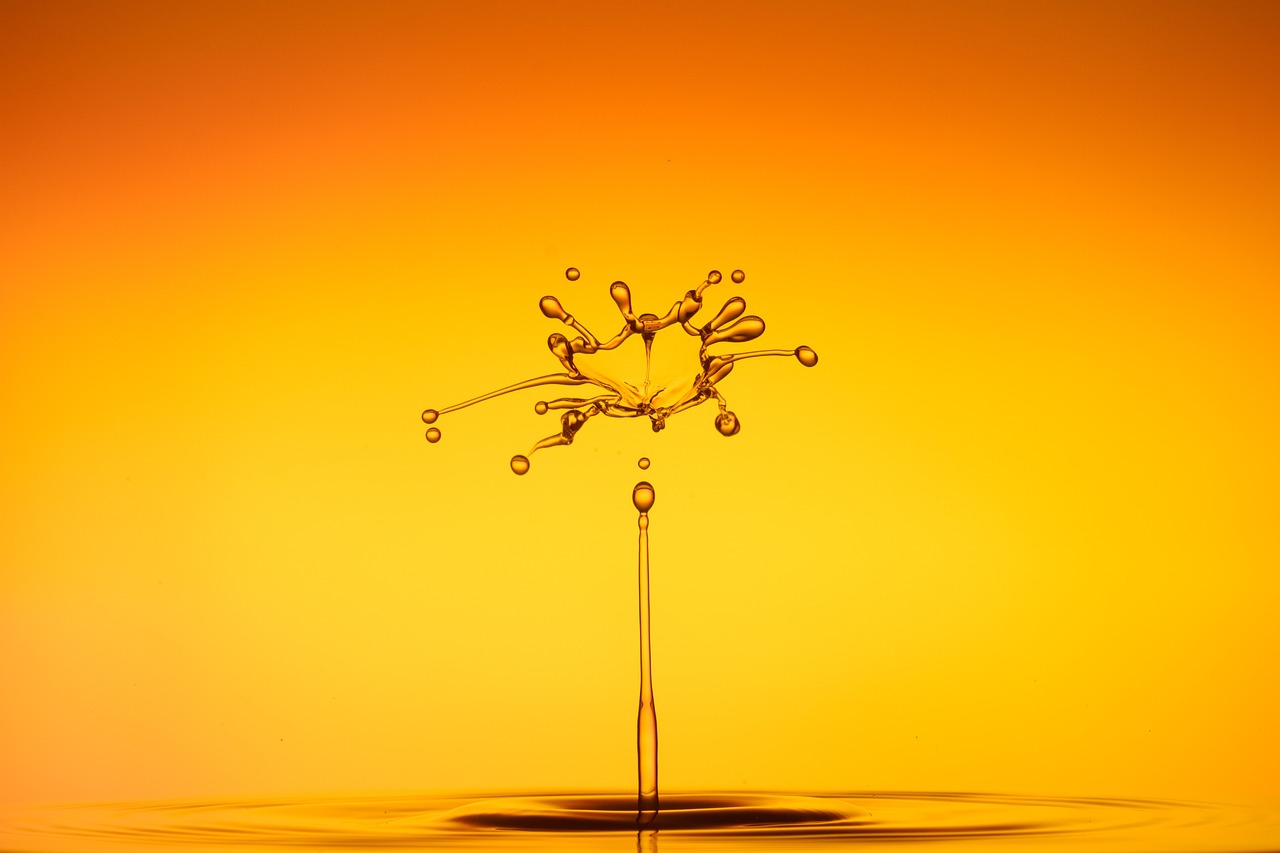
Gathering Necessary Materials
When it comes to creating your own DIY water filtration system, gathering the necessary materials is the first crucial step towards ensuring the success of your project. Before diving into the construction process, it's essential to have all the required items at hand to streamline the setup and make the process smoother.
One of the primary materials you will need is a container to hold the filtration system. This can be a large bucket, a plastic drum, or any other suitable vessel that can accommodate the filtration layers and water flow. Ensure that the container is clean and sturdy to support the weight of the filtration media.
Next, you will need the filtration media, which plays a key role in purifying the water. Common options include activated charcoal, sand, gravel, and cloth filters. Each type of media has its unique properties and filtration capabilities, so choose based on the level of purification you require.
In addition to the container and filtration media, you will need tubing or piping to create the water flow within the system. This will help in directing the water through the filtration layers and ensuring proper circulation for effective purification. Select tubing that fits securely and allows for smooth water movement.
Other essential materials include a spigot or faucet for easy access to the filtered water, a lid or covering for the container to prevent contamination, and tools such as scissors, a drill, and a wrench for assembly. Having these materials ready before starting the construction process will save you time and effort in the long run.
Remember, the success of your DIY water filtration system largely depends on the quality and compatibility of the materials you gather. By ensuring you have all the necessary items upfront, you can proceed with confidence and create a reliable filtration system for clean and safe water.

Choosing the Right Filtration Media
When it comes to choosing the right filtration media for your DIY water filtration system, it's essential to consider the specific contaminants you need to remove from the water. Different types of filtration media have varying capabilities in purifying water, so selecting the most suitable one is crucial for effective filtration.
Activated charcoal is a popular choice for water filtration due to its excellent adsorption properties, which can effectively remove impurities and odors from the water. It is particularly useful in eliminating chlorine, volatile organic compounds (VOCs), and other chemicals that may be present in the water.
On the other hand, sand and gravel are commonly used as filtration media in larger-scale filtration systems. These materials help in the physical filtration of water by trapping solid particles and sediments, providing a preliminary filtration stage before the water passes through finer media.
For those looking for a more natural and sustainable option, bio-sand filters utilize layers of sand, gravel, and a biological layer to remove pathogens and impurities from the water. These filters are effective in producing clean and safe drinking water without the need for chemicals or electricity.
When deciding on the right filtration media for your DIY project, consider the specific contaminants in your water source, the filtration efficiency of the media, and the overall maintenance requirements. By understanding the characteristics of different filtration media, you can create a customized filtration system that meets your water purification needs effectively.

Constructing the Filtration System
Constructing the Filtration System involves carefully assembling the components to create a functional water purification setup. Begin by selecting a sturdy container that can hold the filtration layers securely. The first layer typically consists of large rocks or gravel, which helps to remove larger debris and sediment from the water. On top of this layer, add a finer layer of sand to further filter out impurities. Finally, the key component, activated charcoal, should be placed as the top layer. Activated charcoal is highly effective in absorbing contaminants and improving water quality.
Ensure that each layer is arranged properly to allow water to flow through the filtration system effectively. It's crucial to create a design that promotes efficient filtration while preventing clogs or blockages. Consider the size and height of each layer to optimize the filtration process. Additionally, make sure to secure the layers in place to maintain the integrity of the system during use.
Once the layers are set up, test the filtration system by pouring water through it. Observe how the water passes through each layer and check the clarity of the filtered water. Adjust the layers if necessary to improve the filtration efficiency. Remember that the success of your DIY water filtration system largely depends on the correct construction and arrangement of the filtration media.
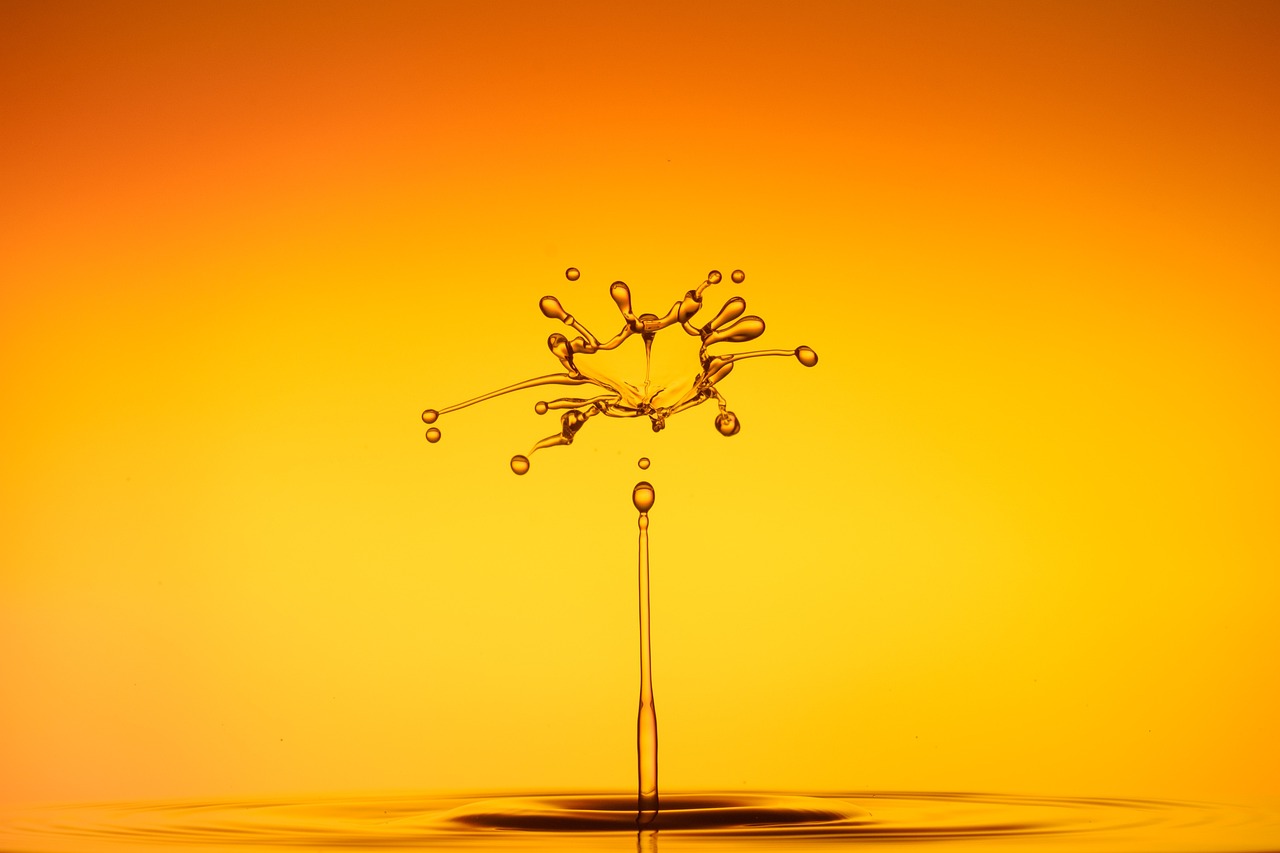
Testing and Adjusting the System
When it comes to testing and adjusting your DIY water filtration system, precision is key. Before relying on the system for clean water, it's crucial to ensure that it functions effectively. One of the primary methods for testing the system is by conducting a flow rate test. This test measures how quickly water passes through the filtration layers, indicating the system's efficiency.
Another essential aspect of testing is water quality analysis. This involves examining the filtered water for any remaining impurities or contaminants. Various water testing kits are available to help you assess the quality of the filtered water accurately. By regularly testing the water, you can make necessary adjustments to enhance the filtration process.
Adjusting the system based on test results is crucial for optimal performance. If the water flow is too slow, it may indicate a clog in the filtration layers, requiring cleaning or replacement of the media. On the other hand, if the water quality test reveals impurities, you may need to upgrade the filtration media or adjust the system's design to improve purification.
Regular maintenance and testing are essential to ensure that your DIY water filtration system continues to provide clean and safe drinking water. By monitoring the system's performance and making necessary adjustments, you can maintain the effectiveness of your homemade filtration setup for the long term.

Ensuring Proper Maintenance
Ensuring proper maintenance of your homemade water filtration system is crucial to ensure its longevity and effectiveness. Regular upkeep tasks such as cleaning the filtration media and checking for any clogs or blockages are essential in maintaining optimal performance. It is recommended to schedule routine inspections to identify any potential issues early on and prevent major problems from occurring.
One effective way to maintain your DIY water filtration system is by keeping a maintenance log to track cleaning schedules, replacement dates for filtration media, and any modifications made to the system. This log can help you stay organized and proactive in addressing maintenance needs promptly.
Additionally, understanding the lifespan of different components in your filtration system is key to ensuring proper maintenance. Knowing when to replace filter cartridges or media can prevent contaminants from bypassing the filtration process and entering your water supply. Regularly monitoring the flow rate and water quality can also indicate when maintenance tasks are required.
When it comes to troubleshooting common issues with your homemade water filtration system, having a basic understanding of how each component works can be beneficial. Knowing how to identify leaks, unusual noises, or changes in water taste or odor can help you pinpoint the source of the problem and take appropriate action to resolve it.
Overall, proper maintenance of your DIY water filtration system not only ensures clean and safe drinking water but also extends the lifespan of your system. By incorporating regular upkeep tasks, monitoring system performance, and addressing any issues promptly, you can enjoy the benefits of a sustainable and cost-effective water filtration solution for years to come.
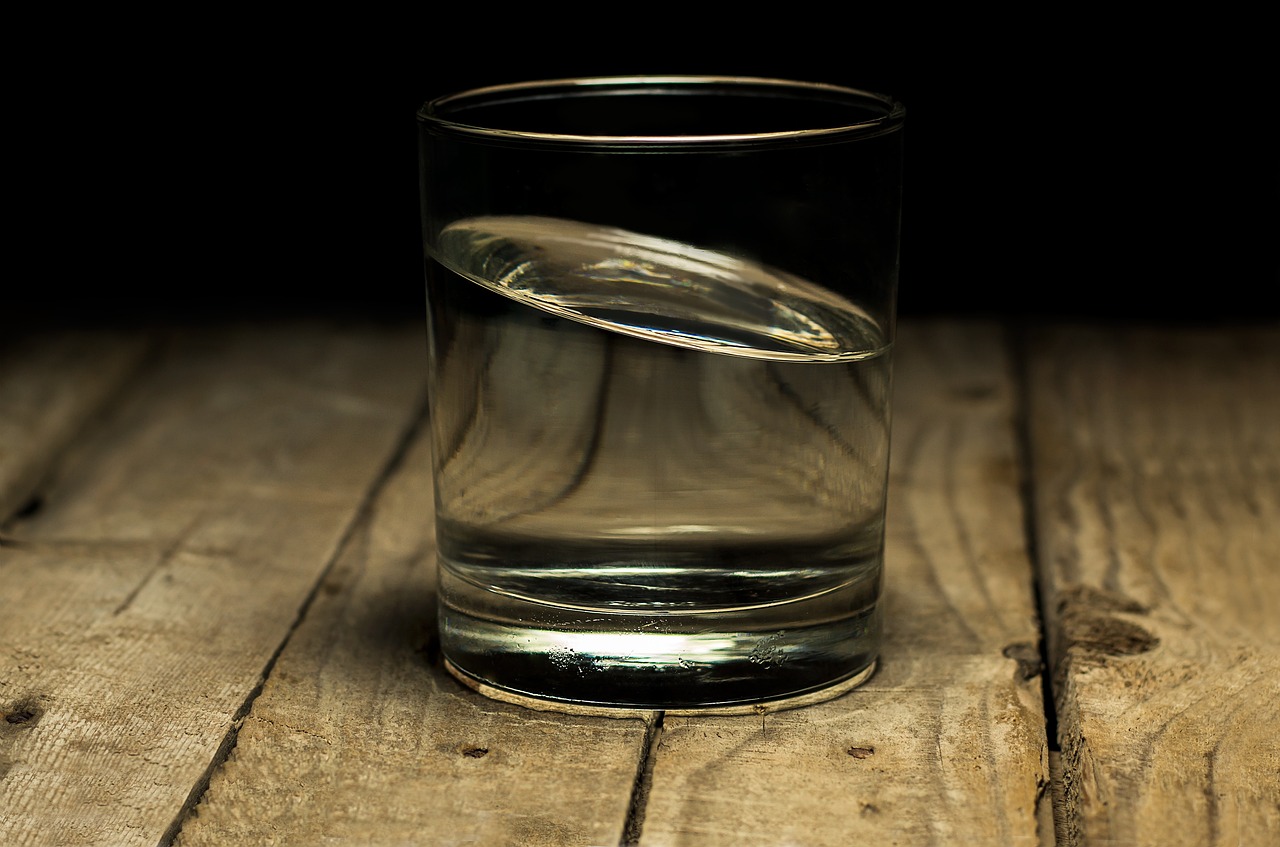
Benefits of DIY Water Filtration
Creating your own DIY water filtration system comes with a multitude of benefits that go beyond just providing clean water. One of the most significant advantages is the cost savings it offers. Commercial water filtration systems can be expensive to purchase and maintain, whereas a DIY system allows you to achieve clean water at a fraction of the cost. This cost-effectiveness makes it a practical choice for individuals looking to purify water on a budget.
Moreover, DIY water filtration systems promote sustainability by reducing the reliance on single-use plastic water bottles. By filtering and purifying water at home, you contribute to environmental conservation efforts by minimizing plastic waste. This sustainable approach not only benefits the planet but also promotes a more eco-friendly lifestyle for you and your community.
Another advantage of DIY water filtration is the customizability it offers. When you build your own system, you have the flexibility to tailor it to your specific needs and preferences. Whether you want to focus on removing certain contaminants or enhance the taste of the water, a DIY filtration system allows you to customize the filtration process according to your requirements.
Furthermore, creating your own water filtration system can be a learning experience that empowers you with valuable knowledge about water purification. As you research and assemble the components, you gain insights into the importance of clean water and the mechanisms behind effective filtration. This hands-on approach not only enhances your understanding of water quality but also equips you with practical skills for future DIY projects.
In addition to these benefits, DIY water filtration systems promote self-reliance by enabling you to take control of your water supply. In situations where access to clean water may be limited or unreliable, having a homemade filtration system ensures that you can purify water for drinking and other essential needs. This self-sufficiency provides peace of mind and prepares you for unexpected circumstances where clean water is essential for survival.
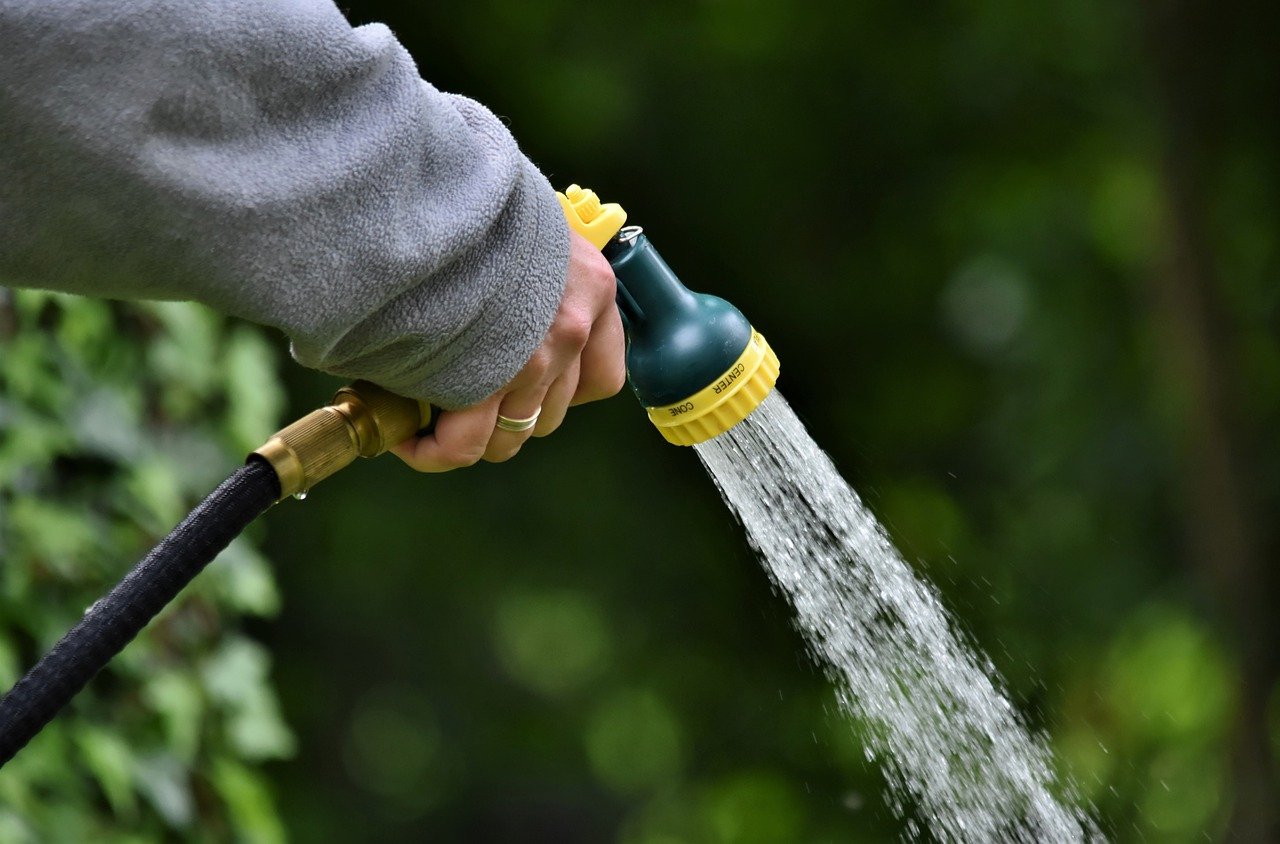
Expanding Your Filtration Knowledge
When it comes to expanding your filtration knowledge, there are various advanced techniques and resources that can help you enhance the effectiveness of your homemade water filtration system. One option is to explore the use of ultraviolet (UV) light as a method for disinfecting water by killing bacteria and viruses. UV light can be a powerful tool in ensuring the safety and purity of your filtered water.
Additionally, you may want to consider incorporating reverse osmosis technology into your filtration system. Reverse osmosis is a process that uses a semipermeable membrane to remove contaminants from water, producing clean and purified drinking water. This advanced filtration method can significantly improve the quality of your filtered water.
Furthermore, researching and implementing nanotechnology in water filtration can lead to more efficient removal of impurities at the molecular level. Nanotechnology offers innovative solutions for enhancing the filtration process and achieving higher levels of water purity.
Exploring filtration cartridges with specialized properties and functions can also help optimize your filtration system. These cartridges are designed to target specific contaminants, providing tailored filtration solutions for different water sources and quality levels.
Lastly, staying informed about the latest water filtration technologies and advancements in the industry can broaden your understanding and expertise in creating effective filtration systems. Keeping up with trends and developments can empower you to continuously improve and innovate in your DIY water filtration endeavors.
Frequently Asked Questions
- Can I drink water filtered by a DIY system?
Yes, if the DIY water filtration system is properly constructed and maintained, it can effectively remove contaminants and provide safe drinking water. However, it is important to regularly test the water quality and ensure the system is functioning correctly.
- What are the common contaminants that DIY water filtration systems can remove?
DIY water filtration systems can typically remove impurities such as sediment, bacteria, protozoa, and some chemicals. The effectiveness of the filtration will depend on the materials used and the design of the system.
- How often should I replace the filtration media in my DIY system?
The frequency of media replacement will vary depending on the usage and the level of contaminants in the water. It is recommended to follow the manufacturer's guidelines for the specific filtration media used and regularly monitor the system for any decrease in performance.
- Are DIY water filtration systems cost-effective compared to commercial options?
Yes, DIY water filtration systems are generally more cost-effective in the long run compared to purchasing commercial water filters. By using readily available materials and maintaining the system properly, you can save money while ensuring clean water.


